News
Stephen Schneider’s sea level alarm without scientific merit, reports SPPI
Claims by Stephen Schneider, a biologist, that melting Greenland ice will drown today’s coastlines and trigger a worldwide belief in the need for action to combat imagined “catastrophic global warming” are scientifically-unjustified and unjustifiable, says the Science and Public Policy Institute – a Washington, D.C. research organization. A recent blog posting by Schneider saying, “We cannot pin down whether sea levels will rise a few feet or a few meters in the next century or two” is unfounded. The UN’s climate panel, the IPCC, says sea level will rise just 17 inches in the 21st century, compared with 8 inches in the 20th. The IPCC also says Greenland would only lose half of its vast ice sheet if global surface temperatures remained at least 2 degrees Celsius higher than the present for several thousand years. Since the turn of the millennium on 1 January 2001, global temperatures have fallen for eight straight years at a rate equivalent to 1 degree Celsius per century. The SPPI ScareWatch briefing note also contains photographs of two US early-warning radar stations taken 20 years ago and more recently, showing a very rapid increase in snow and ice surrounding the stations. Greenland’s ice sheet has been thickening at an average rate of more than 2 inches a year, probably contributing a small overall reduction to sea level in the past decade or two. This considerable increase in the ice-mass of Greenland more than compensates for a reduction of just 0.3% in the area covered by ice over the past 30 years. Bob Ferguson, President of SPPI, said: “Mr. Schneider does not cite a single scientific paper or fact anywhere in his posting. A recent paper by me, also available at our website, points out that many of Greenland’s glaciers have stopped receding and are advancing again. Adds SPPI adviser, Christopher Monckton, “Temperatures in Greenland are actually lower today than they were in the 1930s and early 1940s. And there was no ice anywhere in Greenland 850,000 years ago: the whole ice sheet melted away. We cannot have been to blame, because we did not exist that long ago. Even if Greenland were to melt again, it would be impossible to state that humankind was chiefly to blame. As it is, there is no danger of major ice loss from Greenland at any time in the near future. To suggest otherwise is fantasy.” The paper can be accessed here: http://scienceandpublicpolicy.org/images/stories/papers/scarewatch/monckton_scarewatch_greenland.pdf Contact: Robert Ferguson, Science and Public Policy Institute 202-288-5699 http://www.scienceandpublicpolicy.org/

More News

The Influence of CO2 on Plant Antioxidants
Center for the Study of Carbon Dioxide and Global Change. "The Influence of CO2 on Plant Antioxidants.” Last modified January 8, 2015. http://www.co2science.org/subject/a/summaries/antioxidants.php.
Released On: 1/16/2015
Views: 6501
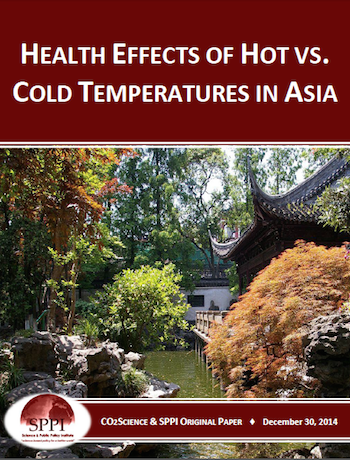
Health Effects of Hot Vs Cold Temperatures in Asia
Health Effects of Hot Vs Cold Temperatures in Asia.
Released On: 1/5/2015
Views: 6736
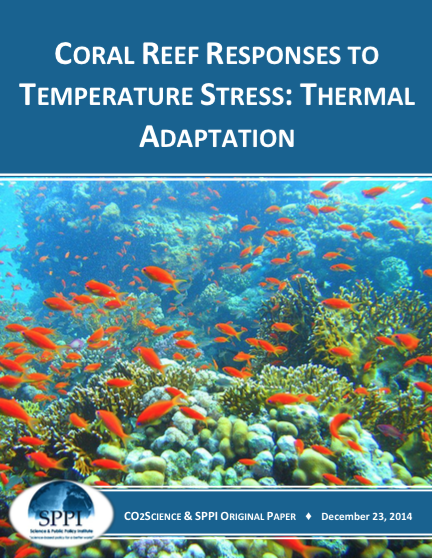
Coral Reef Responses to Temperature Stress: Thermal Adaptation
Coral Reef Responses to Temperature Stress: Thermal Adaptation. As living entities, corals are not only acted upon by the various elements of their environment,they also react or respond to them.
Released On: 12/29/2014
Views: 6368

Forest Growth Response to CO2
Forest Growth Response to CO2. By examining various properties of tree rings, researchers can deduce how historical increases in the air's CO2 concentration have already affected tree productivity and water use efficiency.
Released On: 12/29/2014
Views: 4995

Onward Marches the Great Pause
Onward Marches the Great Pause. Since October 1996 there has been no global warming at all (Fig. 1).
Released On: 12/29/2014
Views: 4036

RESPONSE OF VARIOUS MARINE ANIMALS TO OCEAN ACIDIFICATION AND WARMING
RESPONSE OF VARIOUS MARINE ANIMALS TO OCEAN ACIDIFICATION AND WARMING.
Released On: 12/8/2014
Views: 3693

FACE EXPERIMENTS AND GRASSLAND SPECIES
FACE EXPERIMENTS AND GRASSLAND SPECIES.
Released On: 12/8/2014
Views: 4268

EFFECTS OF OCEAN ACIDIFICATION ON FISH
EFFECTS OF OCEAN ACIDIFICATION ON FISH.
Released On: 12/8/2014
Views: 4283

Response of Fish to Ocean Warming
Response of Fish to Ocean Warming. According to the IPCC, CO2-induced global warming will be net harmful to the world's marine species.
Released On: 11/21/2014
Views: 4192

Long-Term Open-Top-Chamber Study of Sour Orange Trees
Long-Term Open-Top-Chamber Study of Sour Orange Trees. Eight 30-cm-tall sour orange tree (Citrus aurantium L.) seedlings were planted directly into the ground at the Agricultural Research Service's U.S. Water Conservation Laboratory in Phoenix, A ...
Released On: 11/21/2014
Views: 4221
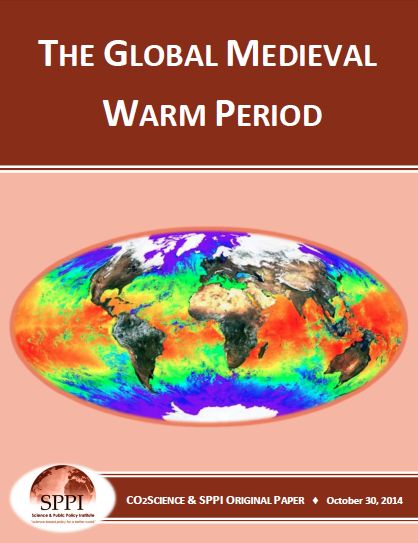
The Global Medieval Warm Period
The Global Medieval Warm Period. Between the 10th and 14th centuries AD, earth's average global temperature may have been warmer than it is today.
Released On: 11/21/2014
Views: 4036
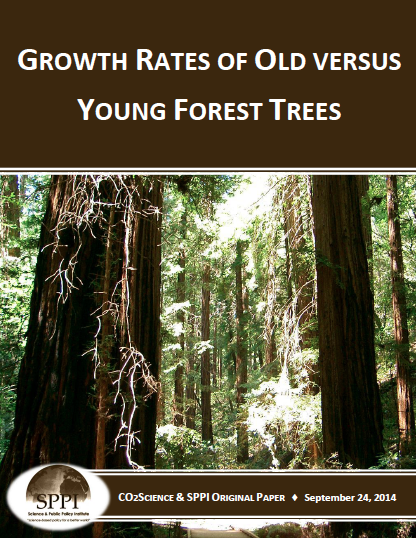
Growth Rates of Old versus Young Forest Trees
Growth Rates of Old versus Young Forest Trees. The planting and preservation of forests has long been acknowledged to be an effective and environmentally-friendly means for slowing climate-model-predicted CO2-induced global warming.
Released On: 9/30/2014
Views: 4299
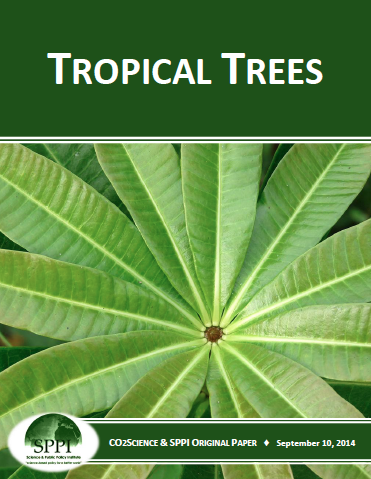
Tropical Trees
Citation: Center for the Study of Carbon Dioxide and Global Change. "Tropical Trees.”
Released On: 9/30/2014
Views: 4363
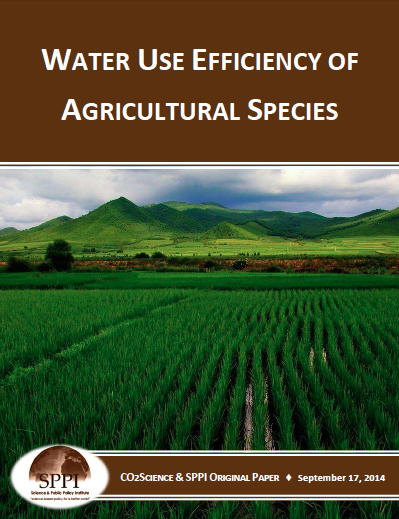
Water Use Efficiency of Agricultural Species
Water Use Efficiency of Agricultural Species.
Released On: 9/30/2014
Views: 4246
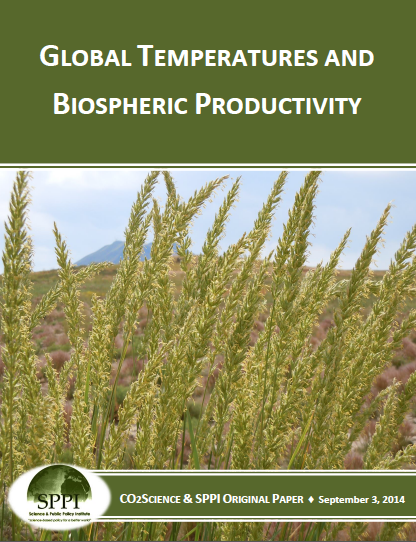
GLOBAL TEMPERATURES AND BIOSPHERIC PRODUCTIVITY
Global temperatures and biospheric productivity. Among the many climate-alarmist fears of CO2-induced global warming is the concern that the productivity of the biosphere will decline if global temperatures rise to the extent predicted by compute ...
Released On: 9/13/2014
Views: 4230
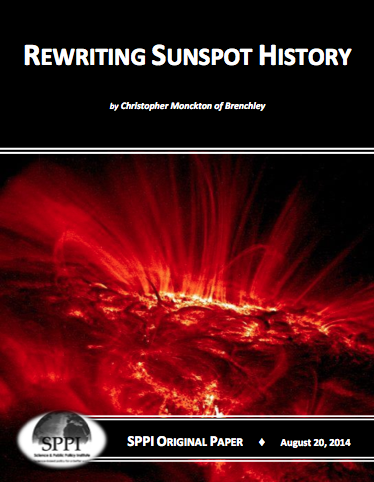
REWRITING SUNSPOT HISTORY
Rewriting sunspot history. In 2006, when I first made the mistake of writing publicly of my doubts about the Party Line on manmade global warming.
Released On: 9/13/2014
Views: 4290
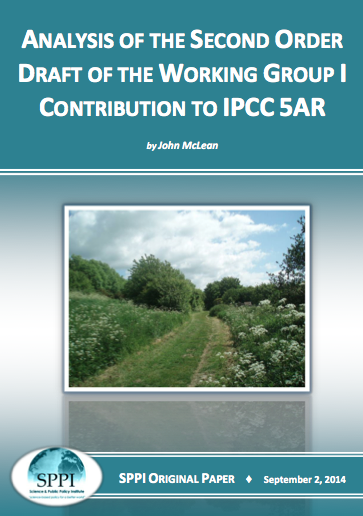
ANALYSIS OF THE SECOND ORDER DRAFT OF THE WORKING GROUP I CONTRIBUTION TO IPCC 5AR
ANALYSIS OF THE SECOND ORDER DRAFT OF THE WORKING GROUP I CONTRIBUTION TO IPCC 5AR. The preparation of IPCC Assessment Reports involves several stages.
Released On: 9/13/2014
Views: 4105
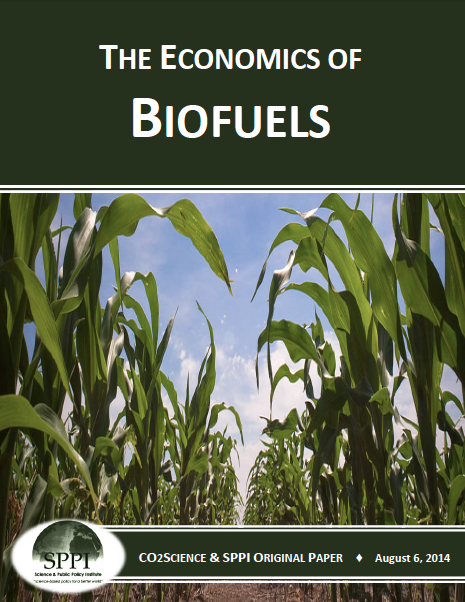
THE ECONOMICS OF BIOFUELS
The economics of biofuels. Aside from rejecting biofuel expansion and use for environmental reasons.
Released On: 9/13/2014
Views: 3950



